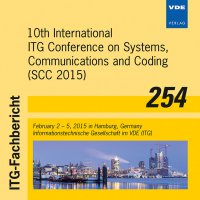Channel Measurements with Different Antenna Array Geometries for Massive MIMO Systems
Konferenz: SCC 2015 - 10th International ITG Conference on Systems, Communications and Coding
02.02.2015 - 05.02.2015 in Hamburg, Germany
Tagungsband: SCC 2015
Seiten: 6Sprache: EnglischTyp: PDF
Persönliche VDE-Mitglieder erhalten auf diesen Artikel 10% Rabatt
Autoren:
Gauger, M.; Brink, S. ten (Institute of Telecommunications, Pfaffenwaldring 47, University of Stuttgart, 70569 Stuttgart, Germany)
Hoydis, J. (SPRAED, 86 Rue de Paris, 91400 Orsay, France)
Hoek, C.; Schlesinger, H.; Pascht, A. (Bell Labs, Alcatel-Lucent, Lorenzstr. 10, 70435 Stuttgart, Germany)
Inhalt:
Massive Multiple-Input Multiple-Output (MIMO) communications using large antenna arrays at the base station carries the promise for significantly increasing data rate and user density in next generation (“5G”) wireless cellular systems. This paper reports on first downlink channel measurements using a scalable 64-element antenna array that enables flexible spatially distributed configurations, applying an LTE-signal format at a carrier frequency of 2590MHz. We compare a planar array geometry with both a horizontal and vertical antenna element arrangement, respectively. To quantify pairwise (two-user) orthogonality, we evaluate the cross-correlation between channel vectors averaged over more than 400 terminal positions. We benchmark those orthogonality relations among user positions with the reference case of an idealized channel matrix based on i.i.d. complex Gaussian distributed channel coefficients, as widely used in computer simulation. Furthermore, we compare indoor with outdoor measurements and find that, for both cases, further system gains may be achieved by increasing the number of base station antennas, in particular for the horizontal antenna geometry.


